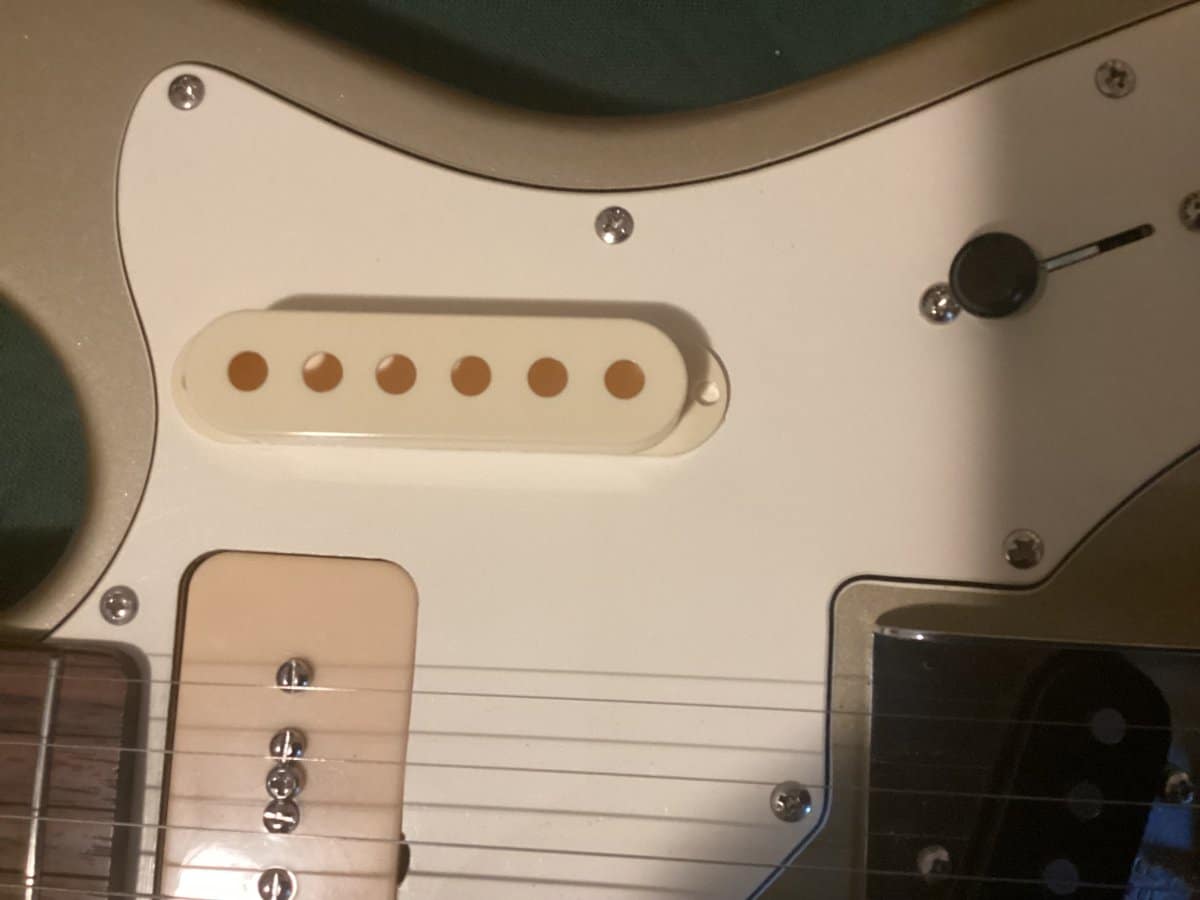Contents
While pickguard is not a must-have on guitars, quite a few guitarists still prefer to put it on their instruments. Among the discussions that involve the pickguard nowadays, one topic piques the curiosity of guitarists worldwide: parchment pickguard vs. white pickguard. While both pickguards serve the same purpose at a glance, they have unique characteristics. In the case that you struggle to make up your mind, my article is for you.
Breakdown Of The Pickguards

Color
All in all, the key difference between parchment pickguard and white pickguard is their color. Considering the fact that both pickguards feature a shade of white, it may be hard for untrained eyes to notice the difference in color
The white pickguard, true to its name, features a vibrant white color that gives guitars a clean and modern profile. That is why the white pickguard suits bright-colored guitars well as it makes them look hip and stylish. On the other hand, the parchment pickguard packs a combination of slightly dark shades of white and mint green. As a result, the parchment pickguard presents an ivory color known as “antique white” and it excels at complementing vintage-looking guitars.
Endurance
For your information, the pickguard is designed to protect the surface area of guitars so endurance is an important criterion. Parchment pickguard and white pickguard should be able to weather scratches in use but the amount of punishment they can withstand is not the same. On average, the white pickguard is made of high-quality wood and outmatches its parchment counterpart in terms of endurance. Thus, to those that hate replacing their pickguard regularly, the white pickguard is the winner in parchment pickguard vs. white pickguard.

Summary
| Parchment | White | |
| Color | Vintage, Classic | Clean, Modern |
| Endurance | Lower durability | Higher durability |
To put it plainly, while choosing between pickguards, you should take into account your guitar and your playing style. If you own an expensive guitar and have concerns about scratches, it’s wise to go for the white pickguard. If you seek a pickguard that won’t stand out like a sore thumb on your classic instrument, you won’t regret getting the parchment pickguard.
Frequently Asked Questions
What is a pickguard?
Often found on the body of guitar and string instruments, pickguard is used to protect the guitar’s surface area from being scratched by picks during use. If you have been using your guitar for a long time and notice your pickguard all scratched up, it is proof that the pickguard is doing its job. Of course, if you do not use a pick to play the guitar, the pickguard serves as little more than decoration.
What are pickguards typically made of?
Generally speaking, materials that people use to make pickguard include plastic, glass, metal, plywood, acrylic glass, fabrics and so on. Expensive guitar pickguards may also use rare materials such as exotic woods, gems, furs, precious metals, …
Do all guitars need pickguards?
Most of today’s guitars have one equipped because pickguards simultaneously help protect the guitar and add a touch of aesthetic style. Aside from that, pickguards neither cost a lot nor require a lot of maintenance. In times of need, you can detach and attach pickguards with relative ease so replacement/removal is a walk in the park. Objectively speaking, if you don’t use picks and have confidence in your abilities, you don’t need to force yourself to use a pickguard.
Is the thickness of pickguards important?
Well, the thicker the pickguard is, the tougher it is. It’s worth noting a higher number of ply may not guarantee a thicker pickguard and quite a few pickguards you can find on the market are called “3-ply pickguards”. “3-ply” here means there are three individual layers of varying colors that make up the pickguard. For example, you could see a white 3-ply pickguard described as W/B/W which indicates:
- The surface will be a white layer
- The middle will be a black layer
- The bottom will be a white layer.
Again, as a layer’s thickness can vary depending on the pickguard, having more ply does not always equal being thicker or stronger. Other than standard 3-ply pickguards, you can also opt for single-ply or double-ply pickguards to make the guitar look more elegant when it is mounted. The overall durability may go down, however, so keep that in mind.


Hi music fan! I am Jeff. Hope that you enjoy some stuff I shared here in my personal blog.
About myself, Currently I am in charging as Artist Manager/Music Supervisor at 72 Music Management. I did managed album to Grammy Award in 2017 with 7 Nominations from 2014-2020 and had the opportunities to work with : A.J. Croce, Blind Boys of Alabama, Bobby Rush, Dom Flemons, Dustbowl Revival, Sarah Grace
Governor of the Memphis Chapter of The Recording Academy is one of a award that I am lucky to achieved.
